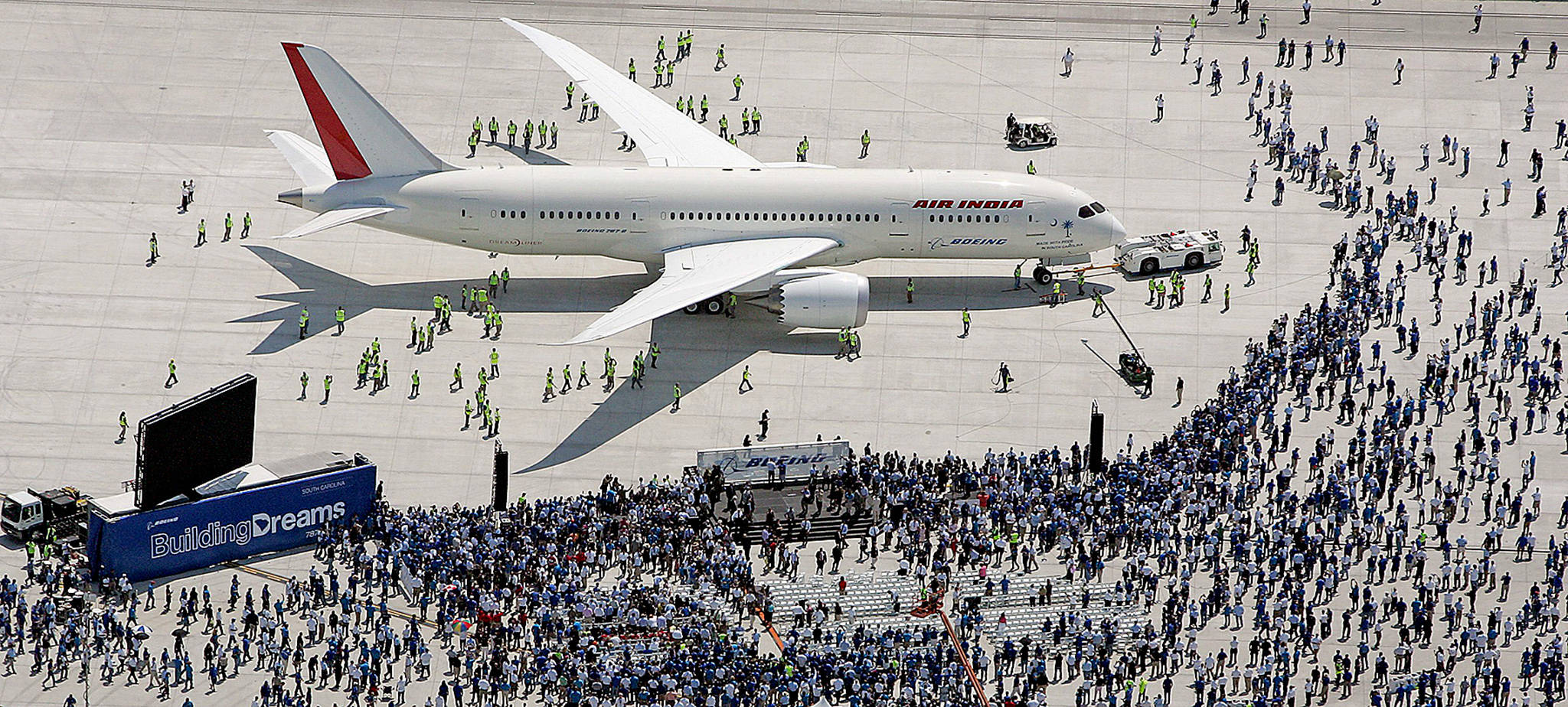EVERETT — Weak orders for the Boeing Co.’s sleek 787 Dreamliner have some analysts considering a day when the advanced jetliner is put together only in South Carolina.
For now, several thousand workers in Everett and North Charleston, South Carolina, assemble 12 of the twin-aisle airplane each month. Boeing executives say they want to make more, not fewer, Dreamliners.
The company expects to decide this year about increasing the production rate to 14 airplanes a month, Boeing’s chief financial officer Greg Smith told industry analysts at the Barclays Industrial Select Conference in February. “Today, that looks good, but we’re monitoring it.”
After years of losing money, the program in late 2015 started bringing in cash. The company continues to whittle down the cost of making the high-tech airliner. Also, it is making more of the higher-priced 787-9 and 787-10 models, and fewer of the smallest version, the 787-8.
Boosting 787 production is critical to Boeing’s bottom line. The aerospace giant is cutting back production on its biggest moneymaker — the 777. A steep drop in new airplane orders — which means fewer down payments from customers — and other market pressures also are weighing down the company’s balance sheet. At the same time, company leaders have promised to boost profit to around 15 percent of operational revenue and increase cash payouts for shareholders.
Orders for big jetliners are down at the moment, but they will rebound after 2020, when airlines are expected to retire a wave of older widebody jets, Smith said.
The vast majority of the 1,207 orders placed for 787s through February came before the airplane left the factory. Boeing gained 910 net orders from 2004 through 2008 and 297 orders in the years since. Production delays and other problems drove down demand for the fuel efficient airplane. With production running smoothly and the airplanes performing well in service around the world, orders have picked up.
“Demand for the 787 remains solid,” Boeing spokesman Paul Bergman said. “But we have more work to do. Securing additional orders to solidify our end-of-decade 14 per month production rate plan remains a priority.”
So far this year, Boeing has landed orders for seven Dreamliners.
Some analysts say that there is not enough demand right now for the 787 to sustain Boeing’s high production rate goals. Most analysts expect the company to keep turning out 12 a month rather than boost production.
A few say Boeing will have to cut Dreamliner output.
Weak demand will force Boeing by 2019 to drop 787 production from 12 airplanes a month to seven a month “to consolidate on one production line — likely (North) Charleston,” said Richard Safran, an investment analyst with Buckingham Research Group, in a report published in February.
In October, UBS investment analyst David Strauss said he expects Boeing to cut 787 production to eight airplanes a month.
“It’s cheaper to produce 787s in South Carolina,” said Scott Hamilton, an industry analyst based on Bainbridge Island.
The cost of labor and regulatory compliance are significantly less there, he said.
Boeing’s South Carolina workforce stumbled when production began there. The company regularly ferried unfinished 787s to Everett for rework and completion. Those days are gone. Both 787 assembly lines are close to moving at similar rates.
The South Carolina workforce likely will have caught up with Everett workers in terms of quality by 2020, Hamilton said.
Also, Boeing South Carolina makes all three Dreamliners — the 787-8, 787-9 and 787-10. Everett only makes the 787-8 and the -9. Boeing has few orders remaining for the 787-8 and is not pushing airlines to order more of the smallest — and least profitable — Dreamliner model.
Boeing’s decision to open a second assembly line outside Washington was a bitter blow for many people in the state, including Rep. Jeff Morris. The Mount Vernon Democrat helped put together a tax break package in 2003 to convince Boeing to build the 787 Dreamliner around Puget Sound.
“When Boeing approached the state, the context was it was a winner-take-all contest to get the work,” Morris said. Then, in 2009, Boeing announced it was opening the North Charleston final assembly line.
Morris does not want to see all 787 production shift to South Carolina, but, he said, it would not cripple Washington’s economy.
“We used to be much more dependent on aerospace and agriculture,” he said.
Now, Amazon, Microsoft and other tech firms have helped create a broader base for the state’s economy.
Dan Catchpole: 425-339-3454; dcatchpole@heraldnet.com; Twitter: @dcatchpole.
Talk to us
> Give us your news tips.
> Send us a letter to the editor.
> More Herald contact information.

























